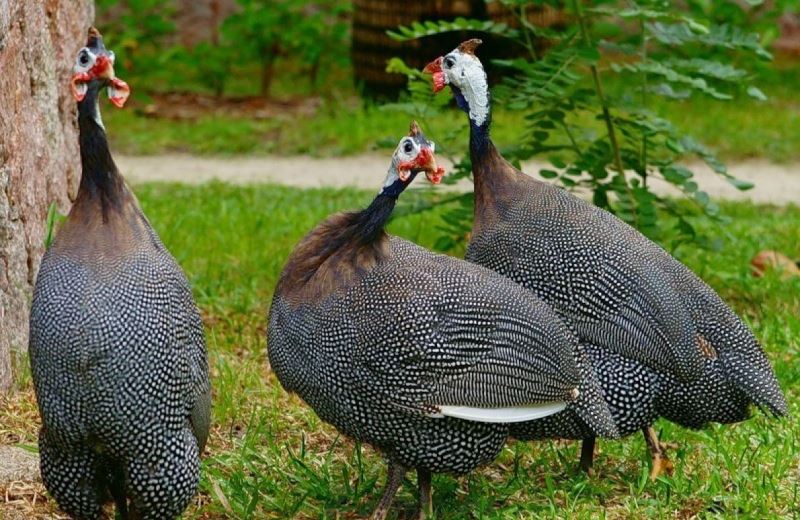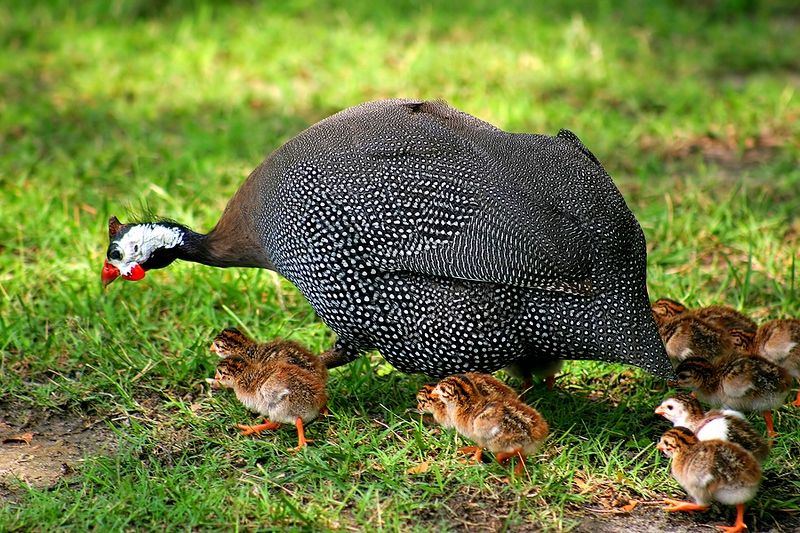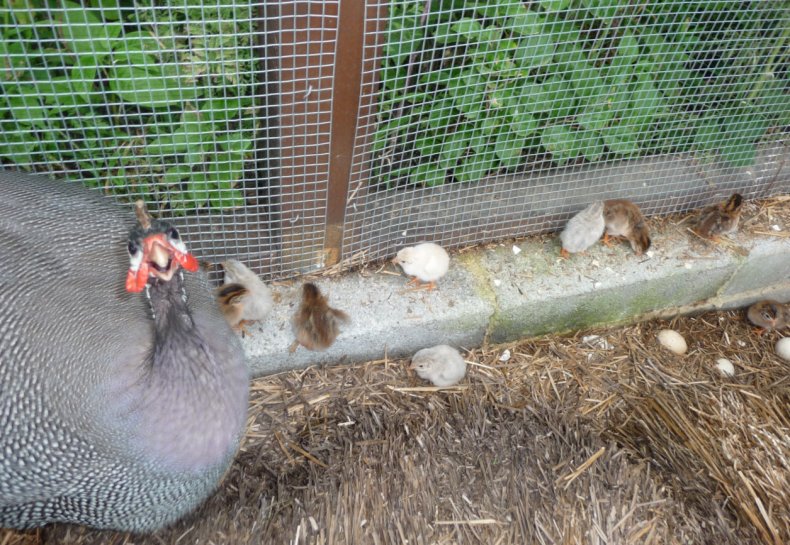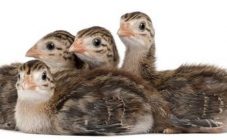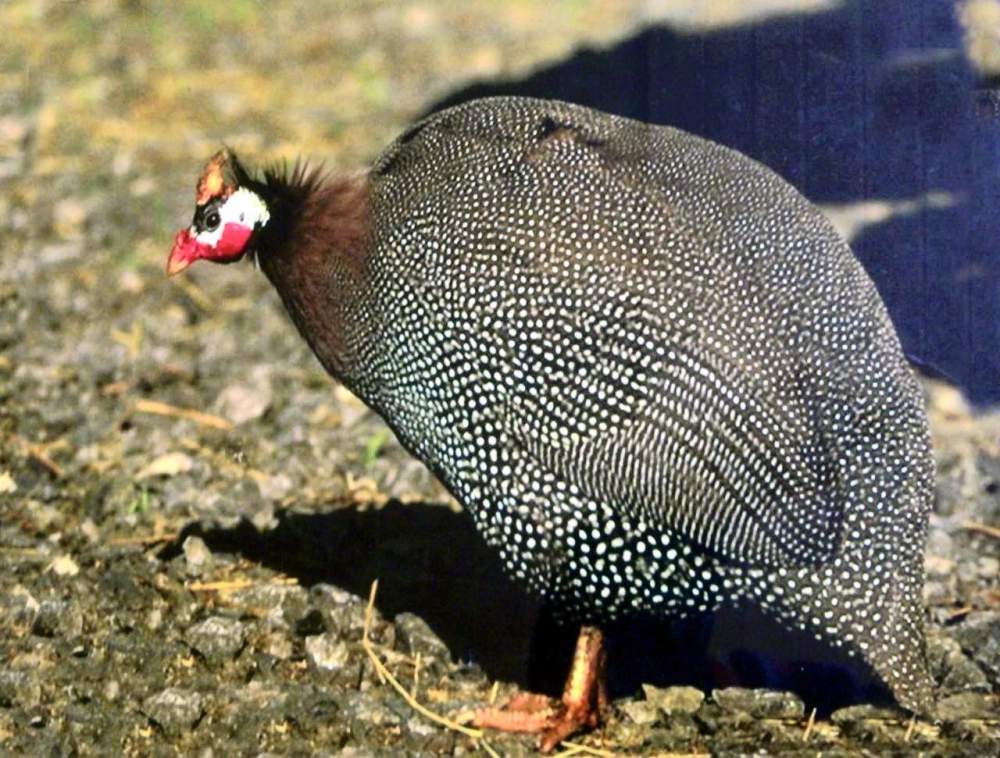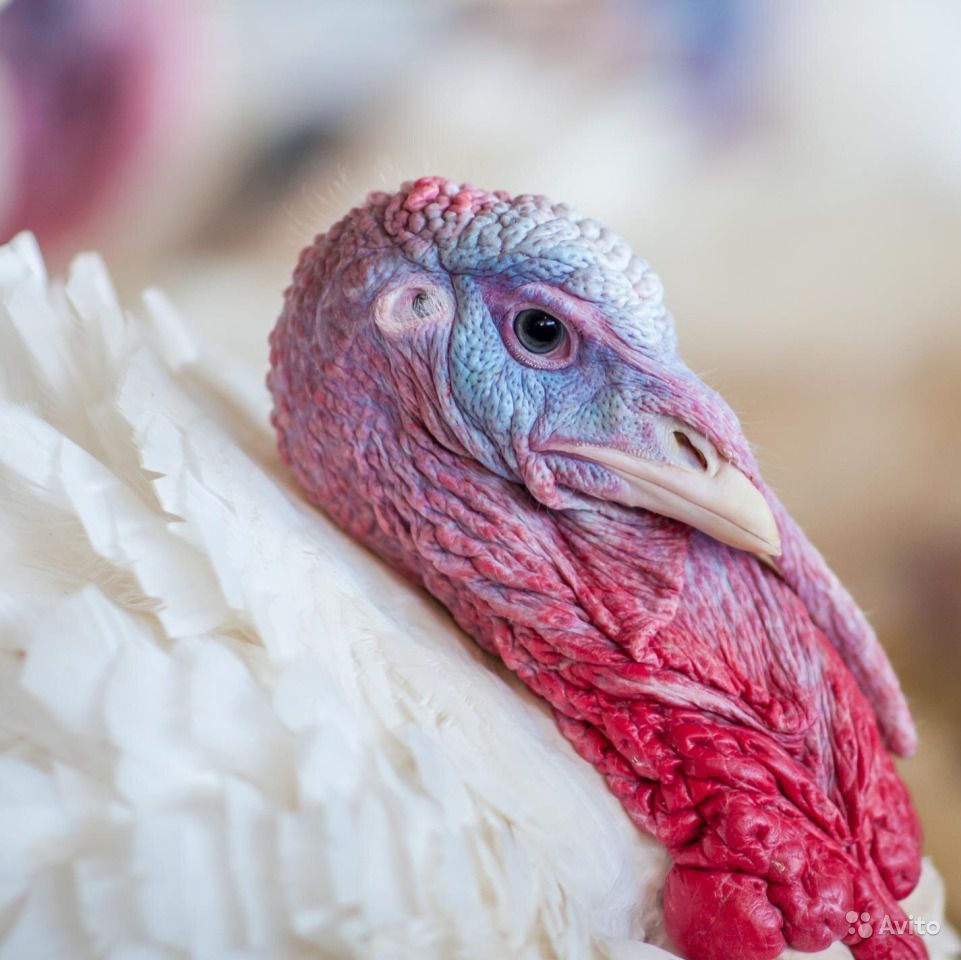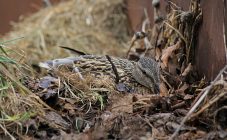Content:
Guinea fowl chicken is not a simple bird, but a royal one, you can hear it in the name itself, and it looks much nobler than ordinary domestic chickens. She was depicted in ancient Greek frescoes, was kept in the palaces of the Egyptian pharaohs, and is now bred on bird farms and in many village farmsteads.
A little about the history of the species
The homeland of the guinea fowl is Africa, where many of its species lived. In ancient Rome, one of the species was domesticated, but with the collapse of the Roman Empire, it disappeared as a poultry. The second time the guinea fowl came to Europe thanks to the Portuguese sailors during the great geographical discoveries. Then it was kept as a curiosity among noble nobles, meat was served at feasts as an exotic delicacy. They were brought to Central Russia in the 18th century also for entertainment, but the bird easily took root in Moscow and gradually became domesticated.
Of all the chicken relatives, only the turkey is larger than the guinea fowl. Its large body rises on rather long legs, and its head is small and devoid of feathers, adorns the head with a fleshy crest and the same "sideburns". The color of guinea fowls (except for the white breed) is amazing, they seem to be wearing dark chintz shirts with small white polka dots.
Now guinea fowls are bred in almost all countries of the world. The main value of these chickens is dietary meat, but there is another indisputable advantage - guinea fowls eat harmful insects.
Characteristics and features of the species
The color of the plumage of the guinea fowl is gray speckled, cream and white. The body of this chicken is oval, the back is convex, the sternum is pointed in roosters, fleshy in hens. Males and females are not very different in appearance, but they cannot be confused. In males, the head is much larger than in females, the nose of the chicken is also not as large as that of the rooster. The hen keeps his head straight, and the rooster protrudes forward.
By nature, guinea fowls are shy, unlike domestic chickens, they get used to the owner and get nervous when strangers, cars, dogs and other large animals appear. Frightened, they behave noisily, they make a big commotion in the poultry house.
A frequent question is whether it is possible to keep the guinea fowl with the chickens. Yes, you can, because they are calm about other poultry.
The weight of an adult is 1.7-3 kg, one chicken gives from 90 to 150 eggs a year, the color of the eggs is yellowish, the shell is thick, so they are quite transportable and have a decent shelf life. The bird is ready for slaughter from the age of three months, when it gains more than a kilogram of weight. The focus of guinea fowl is rather meat due to the excellent taste of meat and the meatiness of the carcass.
For breeding, 5 - 6 hens are left for one cockerel, fertilization occurs on the walk, then the presence of a male is not required. It is possible to hatch guinea fowls in an incubator.
Breeding guinea fowls at home
It is not difficult to breed guinea fowls, no special structures and devices are required, and a separate chicken coop is not needed either. If birds are raised for meat, large aviary sizes are not needed, in a small space they gain weight faster, but tightness has a negative effect on egg production.
This bird is quite omnivorous, it eats with pleasure both plant food and various insects and their larvae. Guinea fowl can be used to destroy pests in vegetable gardens, they will not harm plantings, because they do not dig the ground like domestic chickens, but simply peck beetles and their larvae from the bush.
Guinea fowls can fly, flying over a fence is not a problem for them, in order to prevent such liberties, they have to resort to clipping their wings.
Features of breeding the species
Guinea fowl chicks are born 27 days after laying the eggs. The female can only display them in complete silence and rest. If frightened by a quail that incubates eggs, it can abandon the nest and destroy the entire clutch. In order not to risk it, it is better to put guinea fowl eggs under a homemade chicken or turkey. Breeding guinea fowls in an incubator at home is also a good solution.
In order to get the eggs ready for hatching in the incubator, the female is transferred to enhanced feeding for three weeks - meat and fish waste, cottage cheese are added to the mash, and the kneading is done on fermented milk products.
You need to take eggs from the nest with clean hands, taking them with two fingers by the sharp and blunt ends. How to breed guinea fowl in a home incubator? The main thing here is compliance with the temperature regime:
- in the room with the incubator, the temperature should be +18 degrees, the eggs should stand there for 5 - 6 hours before laying;
- a few days before, the incubator is disinfected and kept at a temperature of +38 degrees;
- the first two weeks after laying the same temperature is maintained, cooling must not be allowed;
- in the next 10 days, the temperature is lowered to 37.8 degrees and the eggs are cooled twice a day for 15 to 20 minutes at room temperature;
- the last two days, the temperature should be 37.5, there is no need to turn and cool.
If there is no automatic turning of eggs, they are laid in the hatchery in a horizontal position, and with automatic turning - with the sharp end down. It is recommended to turn manually 4-6 times a day.
Guinea fowl chicks should hatch on days 27-28, incubation is considered successful if at least 60% of the chicks hatch.
The cultivation of the guinea fowls bred both in an incubatory way and in a crocus occurs according to the following rules:
- no more than 18 chicks per 1 square meter are placed in boxes filled with hay, the air in the box is heated to +35 degrees using a lamp;
- guinea fowls are kept like this for ten days, then they are released to a specially designated area of the chicken coop, the temperature there is maintained within +25 - 27 degrees, using a lamp;
- after two to three weeks, the chicks are released into the open air.
How to feed daily guinea fowls at home? The first meal should be mashed yolk mixed with onions and cottage cheese. They need to be fed with whey, fermented baked milk, yogurt. From ten days of age, plant food is added to the diet in the form of dandelion leaves, nettle, alfalfa.
How to feed guinea fowl chickens in the first days after they are released into the fresh air: at this time, add dry food, making sure that the drinkers are always full and accessible.
Feeding adult guinea fowls is not difficult.If they are given a walk, supplementary feeding will be minimal in summer, and in the autumn - winter period, their diet should consist of oats, wheat groats, cottage cheese and herbs. Caring for guinea fowls involves raising high perches as birds tend to fly up. In addition, the house should be equipped with convenient feeders and drinkers.
Advantages and disadvantages of the species in comparison with others
The advantages of royal birds include:
- the possibility of keeping together with other birds;
- decent egg production for the whole year;
- good survival rate of chicks;
- excellent resistance to diseases common in domestic chickens.
The disadvantages of the species include fearfulness and the ability to fly away.
And yet, the main value of guinea fowls is their healthy meat. It is low in fat, high in iron and vitamins. It tastes more like game.
Farmers should pay attention to the advantages of the species and, possibly, take a worthy place in this business, which is not yet very common in Russia.
